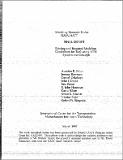| dc.contributor.author | Odoni, Amedeo R. | |
| dc.contributor.author | Bowman, Jeremy | |
| dc.contributor.author | Delahaye, Daniel | |
| dc.contributor.author | Deyst, John J. | |
| dc.contributor.author | Feron, Eric | |
| dc.contributor.author | Hansman, R. John | |
| dc.contributor.author | Khan, Kashif | |
| dc.contributor.author | Kuchar, James K. | |
| dc.contributor.author | Pujet, Nicolas | |
| dc.contributor.author | Simpson, Robert W. | |
| dc.date.accessioned | 2015-03-18T18:02:17Z | |
| dc.date.available | 2015-03-18T18:02:17Z | |
| dc.date.issued | 2015-03-18 | |
| dc.identifier.uri | http://hdl.handle.net/1721.1/96073 | |
| dc.description.abstract | ATM systems throughout the world are entering a period of major transition and change. The combination of important technological developments and of the globalization of the air transportation industry has necessitated a reexamination of some of the fundamental premises of existing ATM concepts. New ATM concepts have to be examined, concepts that may place more emphasis on: strategic traffic management; planning and control; partial decentralization of decision-making; and added reliance on the aircraft to carry to strategic ATM plans, with ground controllers confined primarily to a monitoring and supervisory role. 'Free Flight' is a case in point. | en_US |
| dc.description.sponsorship | NASA's AATT Program under Grant No. NAG 2-997 | en_US |
| dc.subject | ATM systems | en_US |
| dc.subject | strategic traffic management | en_US |
| dc.subject | planning and control | en_US |
| dc.subject | Air Transportation | en_US |
| dc.title | Existing and Required Modeling Capabilities for Evaluating ATM Systems and Concepts | en_US |
| dc.type | Technical Report | en_US |
